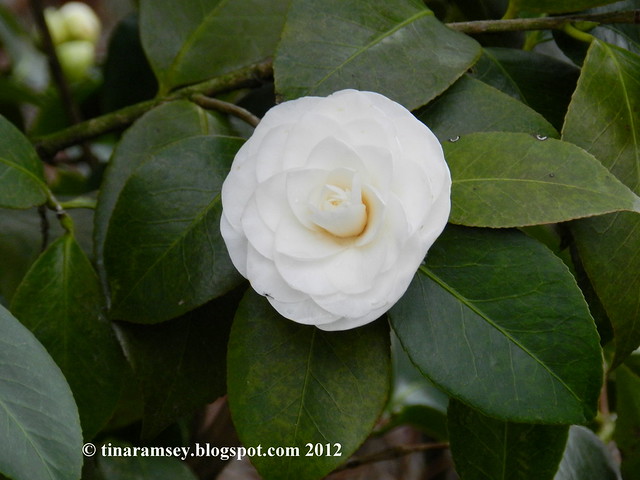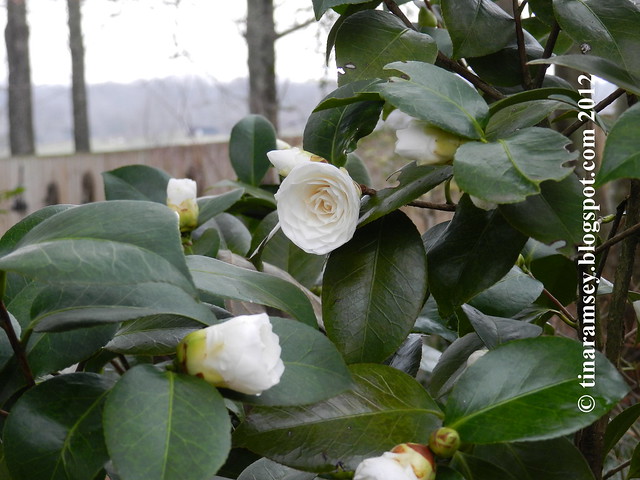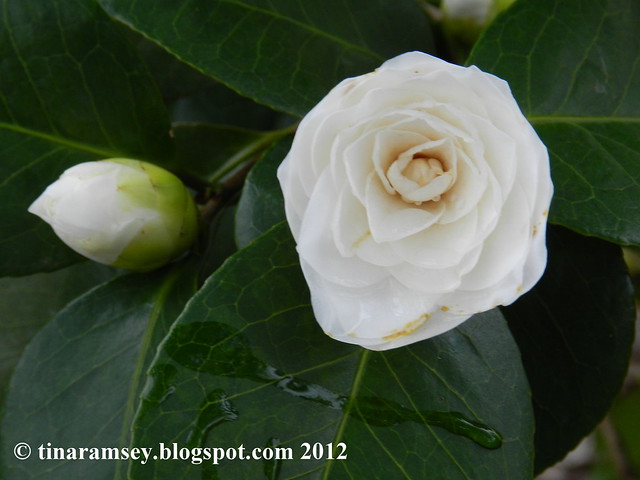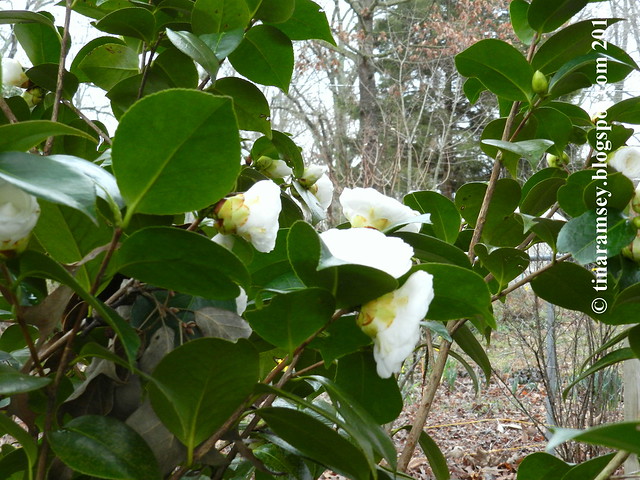
As it is so often happens here in Tiger Gardens I am surprised by what is blooming in the garden. No surprise is as grand as a five foot tall white camellia in full bloom as viewed in the woodland garden. What a shock it was for me to find this camellia blooming! Usually this white camellia (and the other spring blooming camellias here) will get zapped by a freeze. I expect at some point this one will too but for the moment I am reveling it its glory.

Camellias are quite easy for us to grow here in northern Middle Tennessee. I've been growing them since 2003 even when our zone was classified as a 6B. I was told by many gardeners and at least one camellia expert that you can't grow camellias in Zone 6B. Enter the USDA and their new updated zone charts. My zone went from a 6B to a 7A. I guess that now explains why I can grow camellias-tongue in cheek of course. If you wish to read about how I grow my camellias you can check this previous post.

Skeeter posted about her white camellia and how it always gets zapped by a freeze. I find the white camellia blooms do look the worst once they are frozen. It's a messy sight. With gardening we don't always have only happy days in the garden and on this blog we like to show the good, the bad, and the ugly. While frozen blooms are not necessarily bad or ugly, they aren't always good. I expect this stunning shrub and its blooms will be here but for a fleeting moment because freezing temperatures are in this week's forecast.

If you wish to grow camellias you need to be aware of the types of camellias you can grow. Predominantly there are japonicas and sasanquas. I personally like the sasanquas for my garden here. Once you know what kind of camellia you would like to grow you then need to know whether your chosen camellia is a fall or spring bloomer. There are fall blooming and spring blooming camellias. The words fall and spring are really not too terribly applicable because the camellias, at least in my experience, bloom during the winter. But! When I refer to fall and spring you can expect 'fall' bloomers to bloom before the end of the calendar year and the spring bloomers will bloom in the new calendar year. I have had fall bloomers bloom anywhere from October to December, and spring bloomers will bloom anywhere from February to May. Again, spring and fall blooming words to describe camellias are relative. If you wish for a sure bloom with longevity then I suggest you get a fall blooming sasanqua camellia. The fall blooming sasanquas seem to avoid or at least withstand the freezes better than the spring bloomers. They have worked best for me.

The winter bloomers sure can be stunning though. The evergreen leaves add so much to a landscape even when the camellia is not in bloom.

The bloom of a camellia tree is something that can be indescribable. The camellia bloom is for sure a most rewarding part of winter gardening. I could not imagine a southern garden without a camellia.

The wonderful white of this unknown camellia ties in with winter so very well and even if we don't have snow I still have the winter white of a camellia....
in the garden....
Every spring since 2002 I have marveled at the peeping frogs here in my neighborhood. For me the spring peepers signify spring and guess what? I heard the first peepers of the season Saturday night, February 4th. Spring is near. On warm nights I'll sometimes sleep with my bedroom window open just so I can drift off to sleep listening to the very loud peepers calling....
in the garden....
Words and Photos Property of In the Garden Blog Team, In the Garden
